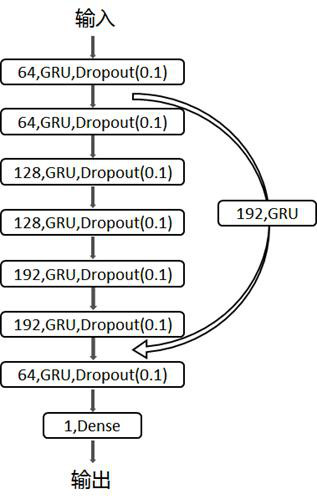Method and system for predicting nitrogen dioxide concentration
A nitrogen dioxide and concentration prediction technology, applied in prediction, design optimization/simulation, instruments, etc., can solve problems such as few prediction methods, no consideration of spatial factors, poor portability, etc., to reduce prediction residuals, coverage Wide range, guaranteed transplantable effect
- Summary
- Abstract
- Description
- Claims
- Application Information
AI Technical Summary
Problems solved by technology
Method used
Image
Examples
Embodiment 1
[0035] The present embodiment 1 provides a nitrogen dioxide concentration prediction system, and the system includes:
[0036] an acquisition module for acquiring monitoring data; the monitoring data includes air pollution monitoring data, meteorological data, remote sensing reanalysis meteorological field data and geographic covariate data;
[0037] The prediction module is used to separately process the monitoring data using a pre-trained random forest model, an extreme gradient boosting tree model and a gated recurrent unit neural network model combined with residual connections to obtain three predicted values of nitrogen dioxide concentration ;
[0038] The calculation module is used for calculating the final nitrogen dioxide concentration value based on the three predicted values of nitrogen dioxide concentration combined with the weighted average algorithm.
[0039] In the present embodiment 1, the nitrogen dioxide concentration prediction method is realized by usi...
Embodiment 2
[0057] In this embodiment 2, a method based on machine learning is provided to predict the short-term NO of an air quality monitoring station in a certain area. 2 Concentration method to achieve large-scale, multi-sequence NO 2 The rapid and accurate prediction of concentration solves the problem that the current machine learning prediction method has low portability and cannot be applied to new monitoring stations with little historical data.
[0058] In this Example 2, the short-term NO of the air quality monitoring station is predicted based on machine learning. 2 Concentration method, the implementation process specifically includes the following steps: step 1, obtaining air pollution monitoring data and auxiliary feature data sets covering a certain area, and obtaining multi-source data sets; step 2, performing multi-source data sets for long time series Preprocessing, time and space fusion, using resampling technology to generate data sets with different time resolution...
Embodiment 3
[0077] In this embodiment 3, a method based on machine learning is provided to predict the short-term NO of an air quality monitoring station 2 Concentration method, the implementation method specifically includes the following steps: step 1, obtaining air pollution monitoring data and auxiliary feature data sets covering the target area; step 2, performing preprocessing, time and space fusion on long-sequence multi-source data sets, Use resampling technology to generate data sets with different temporal resolutions, step 3, based on the fused multi-source data set, use feature engineering to extract spatiotemporal information and add it to the data set and divide the training set and test set; step 4, train the multi-source data set based on machine learning Timing NO 2 The model of the relationship with the feature vector, and finally realize the NO of multiple time series in the target area 2 Concentration prediction.
[0078] The specific calculation is to use z-score no...
PUM
 Login to View More
Login to View More Abstract
Description
Claims
Application Information
 Login to View More
Login to View More - R&D Engineer
- R&D Manager
- IP Professional
- Industry Leading Data Capabilities
- Powerful AI technology
- Patent DNA Extraction
Browse by: Latest US Patents, China's latest patents, Technical Efficacy Thesaurus, Application Domain, Technology Topic, Popular Technical Reports.
© 2024 PatSnap. All rights reserved.Legal|Privacy policy|Modern Slavery Act Transparency Statement|Sitemap|About US| Contact US: help@patsnap.com









